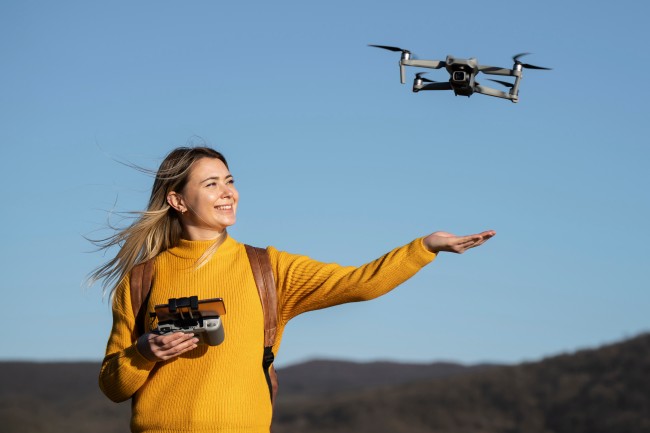Drones are already utilized in medicine, agriculture, logistics, monitoring of the earth’s surface, emergency services, and dozens of other areas.
The amount of know-how in the segment is increasing all the time, and by 2030 the market for unmanned technologies may grow up to $500 billion.
Yura Lazebnikov, the Managing Partner of the international holding TECHIIA, told in a column for Fast Company what changes will take place in the near future. TechMediaToday delivers the main thoughts.

1. Increase in engine power
One of the main problems that engineers are trying to solve is to increase the flight time and load-burying capacity of the drone. The most common type of battery today is lithium. Annually, their capacity increases by several percent, and this is quite acceptable for light devices.
Yet this is not enough for transporting heavy loads, but the battery cannot be increased — it makes the whole structure heavier. There are two priority directions — hybrid electric-gasoline and hydrogen engines.
The first ones are already used in experimental models and show great results: the world record for staying in the air for multi-engine drones is 13 hours. It was performed by an electric-gasoline drone.
Hydrogen engines are also being tested. There are already data that for the same weight, a lithium battery is three times inferior to hydrogen in terms of energy. In addition, hydrogen is a cheap and environmentally friendly fuel.
There is a high probability of growth of the water drone segment by three times, provided that the average annual growth is 24%. This trend will trigger the development of heavy drones.
2. Increase in size
The market for heavy drone projects is changing. Last year, investments in the Advanced Air Mobility segment (the development of technologies for heavy drones that can transport people and cargo) increased fivefold.
At the same time, unmanned delivery services to hard-to-reach places are just beginning to show results. But there is still a lot of work ahead.
The payload capacity of commercial drones is too low. Alphabet’s Wing carries packages up to 2.5 pounds, Walmart — 3 pounds, and Amazon is working on 5 pounders.
But the market strives for bigger numbers. Subsequently, the size of the machines will grow. This is natural, and the number of investments in the sector accelerates the emergence of truly large and powerful drones.
3. Increase in intellectual component
Drones of the future are fully autonomous devices that operate without any operator but are based on artificial intelligence systems.
In order to fly along a given route, and avoid collisions with other drones, houses, and natural obstacles, drones must analyze information and make independent decisions based on it.
The task to be solved is the interaction of a group of drones in the air. What are the rules for staying in the air, what is the priority, and what to do if one fails?
These are systems for preventing collisions when working in a limited space (dense urban development, for example), systems to increase maneuverability, and even self-destruction systems, which are necessary for situations in which a damaged drone can lead to a disaster.
4. Moving to a Drone-as-a-Service model
The biggest trend in the industry is not in innovation itself, but in the way these drones are used. This is exactly what one of the companies of the TECHIIA holding – Culver Aviation – is about.
This option is an alternative to purchasing and maintaining a fleet of drones. The cost of commercial drones can be compared to the price of expensive cars.
Add to this infrastructure, service, and operators — and it turns out that keeping your own fleet of drones is impractical from almost any business perspective.
Therefore, the DaaS (Drone-as-a-Service) model, that is, a turnkey solution to specific tasks, is gaining momentum.
For example, on request, the company can conduct a cartographic survey of a large area, monitor the state of the crop, or set up a temporary mobile network using flying towers — drones that transmit a signal.
If you put all the trends together, the future of commercial drones looks like this: energy-efficient, with minimal human involvement, with simple requirements for the customer’s competencies, with the maximum result for the business.
